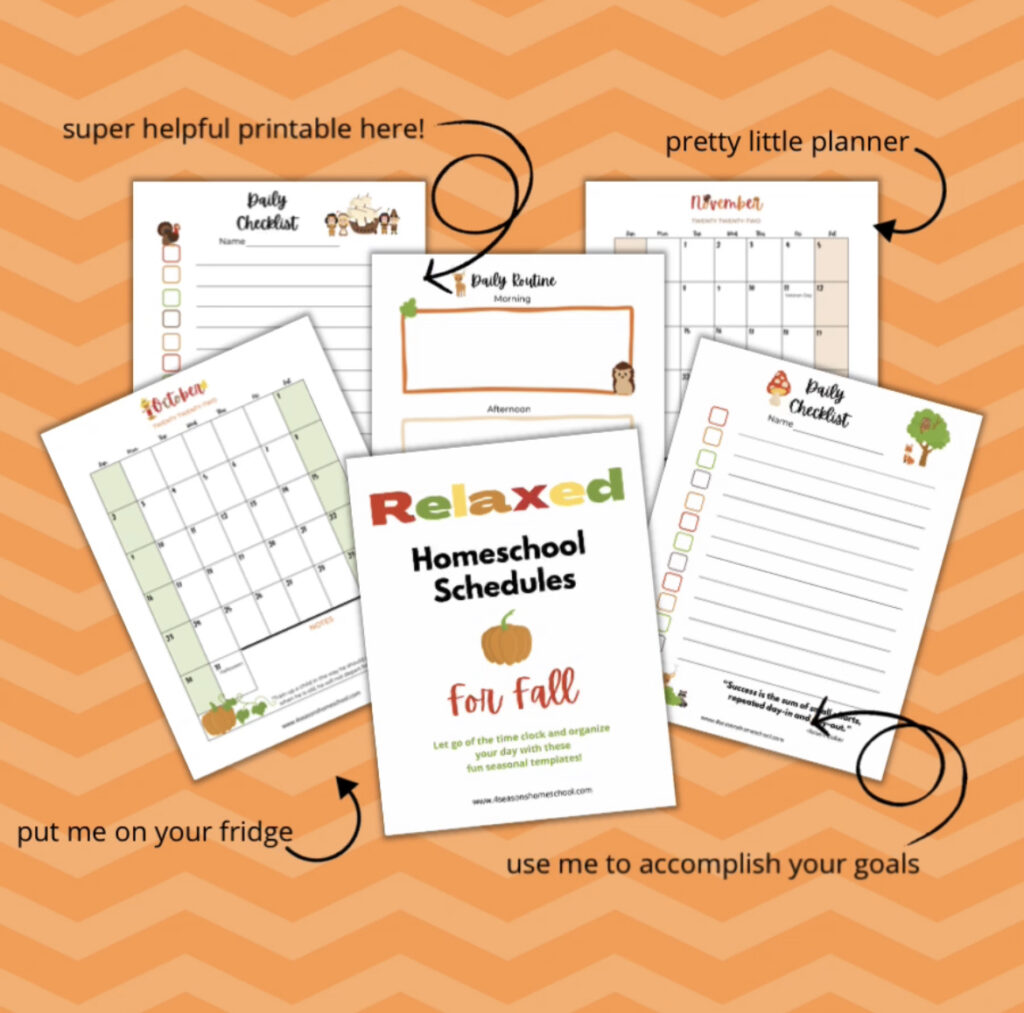Realistic Stress-free Scheduling: How to Save your School Year Now!
We may earn money or products from the companies mentioned in this post.

Why You Need a Plan
Have you ever heard the phrase: “If you fail to plan; you plan to fail”? Well, there is quite a bit of truth in that little nugget! A plan gives us direction to follow, a vision to sustain, and a goal to achieve. For example, we wouldn’t plan a family vacation without considering traveling conditions, means of transport (plane, car, train), routes of travel, and stops along our route. If we did none of these important things…we could hardly expect to arrive at our destination!
Why Traditional Scheduling Can Be Difficult for Homeschool Families

First, let me share my personal experience with traditional scheduling. I saw a lot of information on the internet that promoted this type of scheduling, and the curriculum I was using not only promoted, but seemed to be completely geared towards traditional scheduling. So, I’d try my best–even with a nursing infant–to follow a rigid homeschool schedule out of fear that somehow, my kids would grow up to be undisciplined and unstructured in their own personal lives if I didn’t instill the discipline they needed to succeed by following an hour by hour schedule that would be sure to leave nothing out. My kids may not have been on the bus, but they definitely weren’t going to miss it!
What actually happened is that the schedule never seemed to go according to plan. I have a seizure disorder, and the medication I take makes it necessary that I get enough sleep….throw a breastfeeding infant into the mix and you have a good-intentioned mom that could audition for a zombie movie! My two older children were 5 and 7, and although they were helpful and independent, they still needed help with everything from picking out clothes, to pouring their milk into their cereal, to getting toothpaste on their toothbrushes…and as a mom–you know that it doesn’t stop. Things happen all day–somebody wakes up with a fever, the dog takes off down the road when you let it out to potty, a phone-call with the doctor’s office or the bank turns into a 30 minute hold, and someone is in desperate need of a diaper change…ladies, you know the drill!
As a result, we would unavoidably get an hour or so behind schedule. Trying to play catch-up all day would leave us feeling majorly stressed out, frustrated, and–by the time daddy got home from work–we would be frazzled and emotionally drained.
Why Did It Happen?

To be honest, I had to come to the point that I understood that I had unrealistic expectations of what a homeschool day should look like. Why didn’t it ever seem to work out so efficiently like my own traditional school experience had been. I mean, we had nine periods a day and lunch and band practice and it seemed to work so smoothly–what was the difference?
I had to realize that, as a homeschool mom, I was not only the teacher; but I was also the supplies coordinator, the lunch lady, the janitor, the principal, the gym teacher, the school counselor, the music teacher, the infant room teacher, and the school nurse! No wonder I felt spread so thin and out of focus trying to follow a traditional schedule while trying to change in and out of all these important uniforms all day long.
A Comforting Concept

A couple hours of homeschool is like 8 hours of public education because its like comparing one on one tutoring to one teacher that has to focus on 25 different kids) there is no way a public school teacher would be able to make the same progress in the same amount of time because the groups they are dealing with are just too large to really hone in on individual learning styles and needs. One article I read recently by an educator stated that 40 minutes of one-on-one education was equivalent to 10 hours of classroom time!
With this in mind, I began to see that my kids were going to be fine and I could relax a little!
How to Focus
So first things first….throw out the time block schedule!! 🙂 Then you can a list of …
- the subjects you want to cover each day
- chores that need to be accomplished and the times of day they are required to be completed
- any extra-curricular activities and what days
- Daily Bible Study
- break times and lunch/recess
- time set aside for fun!blah blah relaxed scheduling/setting goals
Next, divide your day into 3 sections: Morning, Afternoon, and Evening (Check out the adorable fall schedule printables in the shop!). Decide what you want to see accomplished when. For example, the morning block may include chores, breakfast, bible study, Math, English, reading, and art (and a break in-between!). Afternoon might consist of lunch/recess, science or history, spelling, music, and writing (find another place to insert a break!). The evening time could consist of supper, chores, family time, and normal bed time routine.
If a child who struggles with a certain subject is having a hard time getting it in the morning, move it to the afternoon or evening block. Easy peasy!
When we use a relaxed schedule, it helps us to subconsciously realize that it’s ok if things don’t go as planned, and enables us to easily adapt to the daily happenings that cause our goals to have to be rearranged from time to time.
Has It Worked?

One of the things that I love about homeschool is that I have the ability to teach my children important life skills. (Baking, cleaning, animal management, gardening, even how to build a fire!) I know that my kids will have the skill-sets that they need to function in life, while enjoying learning the needed skills they achieve from regular school academics. Can they possibly learn and have fun at the same time? Well, my children are exceeding their peers in academic testing, so being laid back in my teaching approach hasn’t caused them to be behind. The less stress our school day has, the more they will retain. We also have the option to focus learning opportunities on their own interests. I happen to feel that hand writing is important for brain development and eye-hand coordination. Since I’m going to have writing assignments for the kids…I can guide them into topics and reading materials that will educate them while focusing on their interests so that they keep the spark–so important!
Consideration for Different View Points
Lastly, I would like to just end with a positive note by acknowledging our homeschool friends who may be able to make the traditional scheduling work for them. We must understand that every situation is different: your family may be part of a co-op, or maybe your family has different physical abilities or energy levels that allow you to be motivated to do a traditional schedule.
Realize that different schedules will work for different families. There really isn’t a cut and dry, only one-way-works, solution to the need for a plan. Embrace the opportunities that God has given YOU and say goodbye to guilt for good!
Scheduling and Planning Resources

Feel free to download the free scheduling resources that I have created and posted in my shop. I have drawn from my experience with scheduling in both traditional and homeschool settings in the creation of these resources, and I believe that you will find them helpful this school year! God bless and keep you in His Care!






